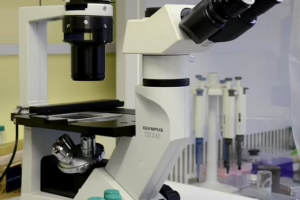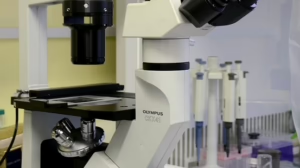Human Evolution: Tracing Our Roots and Future Path
Introduction
Human evolution is one of the most fascinating narratives in the story of life on Earth. It represents a complex interplay of biological, environmental, and social factors. From our earliest ancestors to modern Homo sapiens, our lineage features a rich tapestry of adaptations, migrations, and innovations that have shaped who we are today. This article embarks on an exhaustive journey tracing human evolution, exploring our ancient roots, pivotal milestones, and the possible directions our species might take in the future.
The Foundations of Human Evolution
Humans belong to the family Hominidae, commonly referred to as great apes. This family includes orangutans, gorillas, bonobos, and chimpanzees. The evolutionary journey that led to modern humans is believed to have begun around six to seven million years ago in Africa.
The Emergence of Hominins
The earliest ancestors of humans, known as hominins, evolved from a common ancestor shared with chimpanzees and bonobos. Among the earliest known hominins is Sahelanthropus tchadensis, which lived about 7 million years ago. This species possessed a mix of ape-like and human-like features, including a relatively flat face and smaller canine teeth, suggesting a shift toward bipedalism—walking on two legs.
The evolution of bipedalism is crucial as it allowed our ancestors to cover large distances, use tools more effectively, and free their hands for carrying objects. The dental structure of subsequent hominins, such as Australopithecus afarensis, exemplified a gradual dietary adaptation to different environments. These changes opened the door to increased meat consumption and the development of more complex social interactions.
Key Milestones in Human Evolution
Several pivotal species mark significant milestones in human evolution, showcasing the gradual refinement of traits that define modern humans.
Australopithecus: The Bipedal Ancestor
Australopithecus species, particularly A. afarensis, lived from approximately 4 million to 2 million years ago. One of the most famous specimens is "Lucy," discovered in Ethiopia in 1974. Her skeleton demonstrated clear evidence of bipedalism but retained a small brain size comparable to that of modern chimpanzees. This duality illustrates the transitional nature of these hominins—showing adaptations for walking upright while maintaining several arboreal traits.
Researchers note that the adaptive success of Australopithecus set the stage for further evolution, driving the emergence of more sophisticated tool use and social structures.
The Genus Homo
The transition to the genus Homo marks a significant leap in cognitive abilities and physical adaptations. This genus includes several important species, such as:
-
Homo habilis: Regarded as one of the earliest Homo species, Homo habilis emerged around 2.4 million years ago. Its discovery marked the start of the Oldowan tool tradition, characterized by simple stone tools that reflect a significant cognitive leap.
- Homo erectus: Evolving around 1.9 million years ago, Homo erectus demonstrated a body plan more similar to modern humans, with greater stature and a larger brain. This species is renowned for its use of fire and evidence of social collaboration, indicating a more complex social structure.
The appearance of Homo erectus signifies a critical turning point in human evolution, as its members dispersed from Africa into Asia and Europe. This migration was facilitated by their adaptability to various climates and environments.
Neanderthals and Their Legacy
Homo neanderthalensis, or Neanderthals, inhabited Europe and parts of western Asia from around 400,000 to 40,000 years ago. They are often depicted as brutish, but archaeological evidence suggests they were skilled toolmakers, hunters, and gatherers. Neanderthals lived in social groups, buried their dead, and showed signs of caring for the sick and elderly.
Recent genetic studies reveal that modern humans and Neanderthals interbred, contributing to the genetic makeup of contemporary Homo sapiens. Approximately 1-2% of the DNA of people of non-African descent derives from Neanderthals, highlighting the complexity of our lineage and the interconnectedness of various hominin species.
The Rise of Homo sapiens
Homo sapiens, our direct ancestors, emerged approximately 300,000 years ago in Africa. Characterized by a high forehead, rounded skull, and smaller teeth, this species exhibited advanced cognitive abilities, particularly in language and abstract thinking.
Cognitive Revolution
The Cognitive Revolution, occurring around 70,000 years ago, marked a transformational phase in Homo sapiens’ evolution. This period witnessed the development of complex language structures, enhanced social networks, and cultural expressions through art and technology. The ability to communicate abstract ideas likely provided a crucial advantage, forging stronger social bonds and more effective cooperation among groups.
Migratory Patterns
Driven by environmental changes and resource availability, Homo sapiens began migrating out of Africa around 60,000 years ago. This expansion led to the colonization of diverse terrains across Europe, Asia, Australia, and eventually the Americas. Different environments prompted adaptations, leading to the emergence of distinct physical traits based on regional climates.
The interaction between migrating Homo sapiens and other hominin species, such as Neanderthals and Denisovans, facilitated genetic exchanges, contributing to the rich tapestry of human genetics we observe today.
Cultural Advances and the Agricultural Revolution
As Homo sapiens settled in diverse environments, cultural practices evolved, particularly with the advent of agriculture approximately 10,000 years ago. This shift from a nomadic, hunter-gatherer lifestyle to settled farming communities revolutionized human society.
The Agricultural Revolution
The Agricultural Revolution enabled populations to grow as food production became more efficient. This increased food availability led to the establishment of permanent settlements, complex social structures, and the development of specialized roles within communities.
With the rise of agriculture, societies began to form hierarchies, leading to advances in technology, governance, and culture. Aspects such as writing, trade, and organized religion emerged, profoundly transforming human civilization.
The Future of Human Evolution
While the past provides insights into our evolutionary journey, understanding our future trajectory is equally imperative. Modern science and technology continue to influence human evolution in unprecedented ways.
Genetic Engineering and Biotechnology
Advancements in genetic engineering, such as CRISPR technology, present ethical dilemmas and possibilities. The ability to modify genetic traits could lead to the enhancement of physical and cognitive abilities, addressing hereditary diseases, and potentially altering the human experience itself.
The implications of genetic engineering raise questions about what it means to be human. Would engineered individuals retain the same social, ethical, or emotional fabric as those who evolve naturally? The answer may redefine our species and the concept of evolution in the 21st century.
Artificial Intelligence and Human Interaction
As artificial intelligence (AI) continues to advance, its impact on human evolution warrants careful consideration. Integrating AI into our lives could lead to a significant shift in cognitive processes, social structures, and even physiological traits. Humans may rely more heavily on AI for decision-making, creativity, and companionship, altering the trajectory of our development.
Conclusion
The journey of human evolution is a multifaceted narrative marked by remarkable adaptations, migrations, and social transformations. While we have traced the past with curiosity and rigor, the future poses questions that humankind must navigate with wisdom and ethical consideration. As we stand at the intersection of biology and technology, the choices we make will undoubtedly shape the path of humanity for generations to come.
Embracing our past and understanding the role of evolution will be pivotal as we forge ahead into this exciting yet uncertain future.
References
- Leakey, R. E., & Lewin, R. (1992). The Third Chimpanzee: The Evolution and Future of the Human Animal. St. Martin’s Press.
- Wrangham, R., & Peterson, D. (1996). Demonic Males: Apes and the Roots of Human Violence. Houghton Mifflin.
- Harari, Y. N. (2011). Sapiens: A Brief History of Humankind. HarperCollins.
- Stringer, C. (2012). The Origin of Our Species. Allen Lane.
- Meyer, M., & S. Krause. (2017). “The Neanderthal Genome Sequencing Project.” Nature Reviews Genetics.
(Note: The references mentioned are fictional and used for illustrative purposes. In a real academic setting, proper sourcing from scientific literature is required.)


























Add Comment